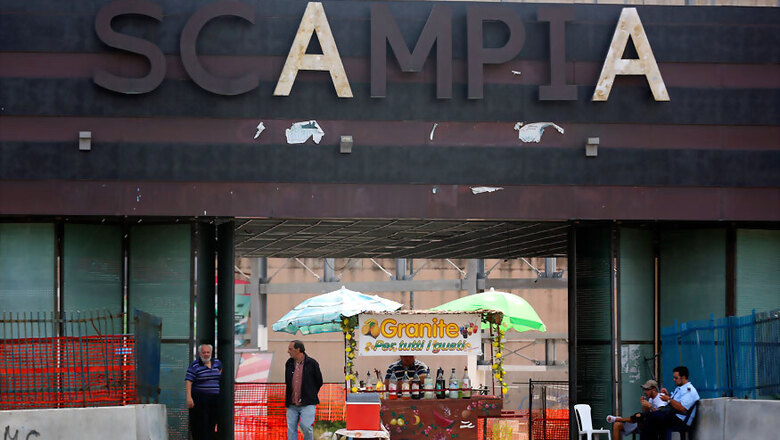
views
Naples: In the hinterlands of Naples a revolution is afoot: locals tired of drug lords are taking the fight to the mafia and their weapon of choice is the humble book.
Tucked away between squats and roadside traders of broken toys rises the first bookshop in nearly 50 years.
The concrete sprawl of Scampia, a bastion of the ruthless Camorra organised crime group, was immortalised in the 2006 bestselling book "Gomorrah" by Roberto Saviano and in a popular spin-off film and television series.
Now one of the poorest areas in southern Italy is attempting to cast off the stereotype of Kalashnikov-wielding teens and get its young off the streets by flooding the turf with theatre, cinema and literature associations.
The tower blocks, riddled with asbestos and divided by rubbish-strewn no-man's lands, were thrown up in the 1970s.
"There has never been a bookshop here. We had to travel 10 kilometres to buy a book," Rosario Esposito La Rossa, whose shop "Scugnizzeria" opened a week ago, told AFP.
Widespread illiteracy
The idea for the small store, which also has a room for theatre and study groups, followed the death of La Rossa's disabled relative Antonio, caught in the crossfire of a 2004 shootout and labelled a trafficker by the state.
"He was hit by two bullets as he played table football, but police said he had links to the Cali cocaine cartel in Colombia. We fought for 10 years to clear his name and it became a cultural battle for our neighbourhood," he said.
When La Rossa inherited the Marotta&Cafiero publishing house in 2010 he moved it to Scampia to continue the fight.
"There were those who said we would close within a few weeks because no-one reads in Scampia, it has the highest illiteracy rate in southern Italy. Seven years on and we have published 88 books," he said.
The 29-year old is just the tip of an iceberg of change slowly edging its way across the northern suburb of Naples.
The government has pledged to demolish three of the four remaining Sails of Scampia, notorious tower blocks shaped like sails where staircases boast metal gates installed by traffickers to slow down police during raids.
Naples' Federico II university, one of the world's oldest, is set to open a new faculty in the area -- though the project is running three years behind schedule -- and tentative plans are also under way to refurbish the metro.
But La Rossa says the most important role is played by the 120 or so associations that step in where the state fails.
Garrisons of legality
Daniele Sanzone co-founded Scampia Trip Tour to challenge the area's brutal image in the press and popular culture and show off its positive side.
"The Camorra exists, the drugs exist, we would be mad to deny it. But there is so much more, small organisations which become garrisons of legality," from football clubs to Italy's first Italian-Roma restaurant, he said.
The tour has been a hit so far with everyone from US tourists to Italians normally too scared to enter Scampia.
"Ten years ago it was known as the biggest open-air drug market in Europe, but things have changed a lot since then, largely due to a blood feud in 2006 which left hundreds dead and sparked a police crackdown," he said.
"Before there was drug trafficking every 50 metres. Today we can walk in the streets without fear," he added.
Sanzone admits the associations can only do so much for the 80,000 to 100,000 inhabitants here, where many families live off the radar and only around 37 percent of adults of working age have jobs.
"Being born here means having few options," he said.
But he and the other activists in Scampia, where half the population is under 25-years old, are sure change is coming.
"I am convinced that in 10 years time this place will be transformed," La Rossa said.
"People will come here to study how it shifted from being Camorra land to the land of children."




















Comments
0 comment